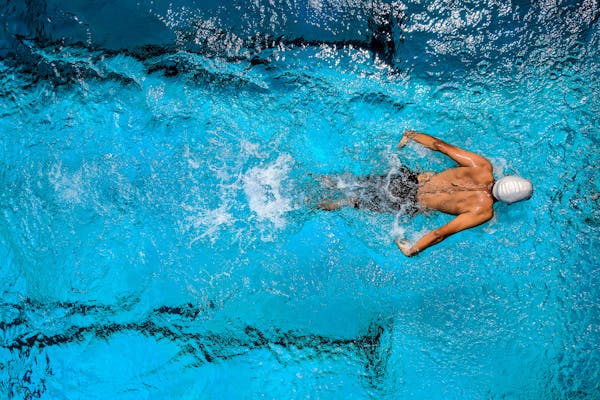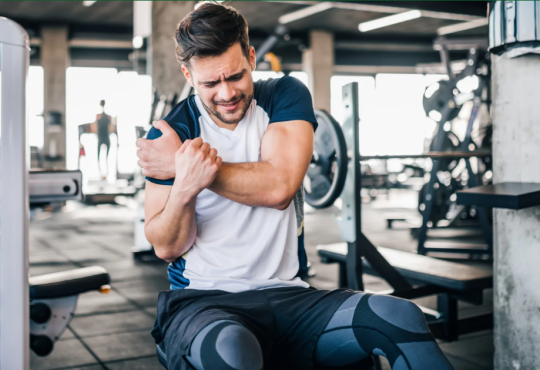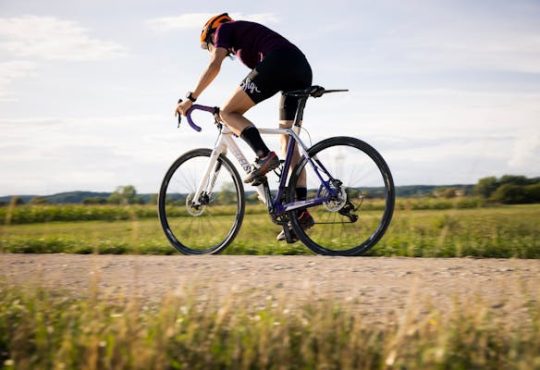Swimming is a rewarding activity that offers a multitude of physical, mental, and emotional benefits. As a low-impact sport, it caters to a wide range of fitness levels and ages, making it accessible to virtually anyone who seeks to improve their health, fitness, and overall well-being. Whether you’re looking to swim for recreation, competition, or fitness, refining your swimming skills requires an understanding of basic techniques, consistent practice, and a tailored exercise regimen. This article delves deeply into the world of swimming, exploring its benefits, essential techniques, common challenges, and detailed exercises to improve swimming skills.

The Multifaceted Benefits of Swimming
Swimming is one of the few sports that offer a complete workout, engaging nearly all muscle groups while also promoting cardiovascular health. Beyond its physical advantages, swimming positively impacts mental and emotional well-being, offering stress relief, cognitive benefits, and even emotional balance.
1. Comprehensive Full-Body Workout
Swimming provides a comprehensive workout, engaging muscles throughout the entire body. Whether it’s the flutter kick propelling your legs or the arm strokes that pull your body through the water, each movement strengthens specific muscle groups. The different swimming strokes—freestyle, backstroke, butterfly, and breaststroke—target muscles in varying ways, ensuring that swimming is an effective form of both aerobic and anaerobic exercise.
For instance, freestyle focuses on the chest, shoulders, triceps, and hip flexors, while the breaststroke activates muscles in the inner thighs, hamstrings, and lower back. Additionally, swimming increases muscular endurance, allowing swimmers to engage in long-distance swims without tiring as quickly. The water provides natural resistance, enhancing muscle toning without the strain of high-impact sports.
2. Joint-Friendly, Low-Impact Exercise
Swimming is a non-weight-bearing exercise, meaning it places minimal stress on the bones and joints. The buoyancy of water supports the body’s weight, reducing the risk of injury to bones, muscles, and joints. This makes swimming an ideal exercise for individuals recovering from injury, those with arthritis, or older adults looking for a safe way to stay active.
Compared to running or other land-based sports, swimming significantly lowers the chances of sustaining repetitive stress injuries. For athletes seeking to cross-train or maintain their fitness during rehabilitation, swimming offers a gentle yet effective way to stay in shape without compromising joint health.
3. Boosts Cardiovascular Health
Swimming is an exceptional cardiovascular workout. As an aerobic activity, it strengthens the heart by encouraging more efficient pumping of blood, which lowers heart rate and blood pressure over time. Regular swimming improves circulation, oxygenating muscles more efficiently and enhancing endurance. Long-term, these cardiovascular benefits help reduce the risk of heart disease, stroke, and other chronic illnesses.
Furthermore, swimming forces the lungs to work harder, which can increase lung capacity and improve breathing efficiency. For those with respiratory conditions like asthma, swimming can actually improve lung function by encouraging controlled breathing patterns.
4. Mental Health and Cognitive Benefits
Beyond the physical benefits, swimming is incredibly therapeutic. The rhythmic nature of swimming, paired with the calming sensation of being submerged in water, has been shown to reduce stress, anxiety, and depression. Many swimmers experience a sense of meditative calm, focusing on their strokes, breathing, and the sound of the water. This mindfulness element can help individuals clear their minds and find solace from the pressures of daily life.
Swimming also stimulates the release of endorphins—chemicals in the brain that act as natural painkillers and mood enhancers. Regular swimming has been linked to improved sleep, reduced feelings of anxiety, and even cognitive improvements, such as enhanced memory, sharper focus, and better learning capacity.
5. Increases Flexibility and Balance
The dynamic nature of swimming requires a full range of motion from major joints, including the shoulders, hips, and knees. As swimmers stretch and extend their arms, legs, and torso during each stroke, they increase their flexibility over time. This increased range of motion can improve balance, reduce stiffness, and even aid in injury prevention. Swimmers often exhibit enhanced coordination as well, due to the need for synchronized movement between the arms and legs, particularly during complex strokes like butterfly.
Mastering the Fundamental Swimming Techniques
To maximize the benefits of swimming and become a more efficient swimmer, it’s important to master key techniques. Proper form not only improves speed and endurance but also reduces the risk of injury and fatigue. Below are the fundamental techniques every swimmer should focus on to enhance performance.
1. Optimal Body Position
Maintaining a streamlined body position is essential to reducing drag and increasing efficiency in the water. In most strokes, the body should remain horizontal, with the head, spine, and hips aligned to minimize resistance. Swimmers should aim to keep their legs close to the water’s surface, engaging their core muscles to maintain balance and prevent sinking.
In freestyle, for example, a proper streamlined position means the swimmer’s head remains in a neutral position, with the face in the water and eyes looking downward. Swimmers often make the mistake of lifting their heads too high, which causes the hips to drop and increases drag. The goal is to stay as flat as possible to glide through the water smoothly.
2. Effective Breathing Techniques
Breathing is one of the most crucial elements of swimming and can often be the most challenging aspect to master. Proper breathing techniques allow swimmers to maintain a steady rhythm, avoid fatigue, and sustain their energy during long swims.
In freestyle, swimmers typically breathe by rotating their head to the side during the recovery phase of the stroke (when one arm is out of the water). The key is to take quick, efficient breaths and immediately return the head to the neutral position. It’s important to exhale fully while the face is underwater, ensuring that inhalation is fast and controlled when the head turns to breathe.
For beginner swimmers, practicing breathing drills in isolation can significantly improve overall comfort and efficiency in the water. This might include side breathing while holding onto the pool wall or practicing with a snorkel to focus solely on technique.
3. Efficient Kicking
The kick provides propulsion and helps balance the body during swimming. A common mistake among novice swimmers is either over-kicking or under-kicking, which can waste energy or provide insufficient propulsion.
The flutter kick, used in freestyle and backstroke, involves a rapid, alternating motion of the legs. Kicks should come from the hips, with minimal bend at the knees. A strong, consistent flutter kick will help the swimmer maintain speed while reducing drag.
In contrast, the breaststroke kick, or frog kick, involves a circular motion of the legs, with the feet flexed outward. Timing is crucial in breaststroke, as swimmers need to synchronize their kick with the pull phase of the stroke for optimal propulsion.
4. Arm Movements and Stroke Mechanics
The arms play a critical role in providing propulsion during each swimming stroke. Proper hand placement and stroke mechanics are essential for maximizing speed and efficiency. Swimmers should focus on a smooth entry into the water with each stroke, aiming to minimize splash and drag.
For freestyle, the arm stroke involves a high elbow catch, where the swimmer bends the elbow as the hand enters the water, pulling downward and backward in a powerful motion. The hand exits the water just past the hip, and the arm recovers above the water in a relaxed motion before repeating the cycle.
In butterfly, the arm movement is more dynamic, requiring simultaneous strokes of both arms. The swimmer’s hands should enter the water shoulder-width apart, with a strong downward pull, followed by a quick recovery where the arms lift out of the water together.
5. Turns and Push-Offs
In competitive swimming, efficient turns and push-offs from the pool wall can make a significant difference in race performance. The flip turn, commonly used in freestyle and backstroke, allows swimmers to change direction quickly while maintaining momentum.
To execute a proper flip turn, swimmers should approach the wall at speed, tuck their chin, and somersault forward, planting their feet on the wall for a powerful push-off. Maintaining a streamlined body position during the push-off and dolphin kicking underwater can help swimmers gain speed before surfacing for the next stroke.
The Four Major Swimming Strokes: Detailed Breakdown
1. Freestyle (Front Crawl)
Freestyle, also known as the front crawl, is the fastest and most efficient stroke. It is characterized by an alternating arm stroke and flutter kick, with breathing coordinated to the side. The key to an effective freestyle stroke lies in maintaining a streamlined position, ensuring that each arm stroke is powerful, and keeping the breathing technique fluid.
The swimmer’s hands should enter the water fingertips first, with a high elbow to maximize the pull phase. As one arm pulls, the other recovers above the water in a continuous, cyclical motion. The flutter kick provides propulsion, with quick, alternating kicks originating from the hips.
2. Backstroke
Backstroke is the only competitive stroke performed on the back, making it unique in its mechanics. Like freestyle, it involves an alternating arm stroke and flutter kick, but the body is in a supine position. Swimmers should keep their head still and hips high to maintain proper alignment.
In backstroke, the swimmer’s hand enters the water pinky-first, and the arm pulls through in a wide arc. The flutter kick helps maintain speed and stability, while breathing is natural since the face is out of the water at all times. Keeping the hips high is essential to avoid sinking and slowing down.
3. Breaststroke
Breaststroke is one of the slowest yet most technical strokes. It requires precise timing between the arms and legs, with both limbs moving in a synchronized, sweeping motion. The swimmer’s arms perform a circular pull, while the legs execute a frog kick, propelling the body forward. Breathing occurs during the arm pull, with the swimmer’s head lifting out of the water.
Timing is critical in breaststroke, as the pull, kick, and glide must be perfectly synchronized. The stroke also emphasizes the glide phase, where the swimmer streamlines their body between strokes to minimize resistance.
4. Butterfly Stroke
Butterfly is arguably the most physically demanding stroke. It requires a powerful, simultaneous arm stroke paired with a dolphin kick, where both legs move together in an undulating motion. The swimmer’s arms enter the water in unison, with a strong downward pull followed by a quick recovery.
Breathing in butterfly typically occurs during the recovery phase, as the swimmer’s head lifts out of the water. Mastery of butterfly requires significant upper body strength, coordination, and rhythm, making it one of the most challenging strokes to perfect.
Common Challenges in Swimming
Swimming, while enjoyable and rewarding, poses several challenges, especially for beginners. Understanding and overcoming these hurdles is critical to improving swimming skills and enhancing overall performance.
1. Fear of Water and Anxiety
Many people struggle with a fear of water, which can hinder their ability to relax and focus on proper technique. This fear often stems from a lack of familiarity with the water, particularly in deeper pools. Overcoming this fear requires gradual exposure to the water, starting in shallow areas, and developing comfort with floating and submerging the face in the water.
Breathing exercises and water safety skills can help build confidence and reduce anxiety. Taking swimming lessons with a certified instructor can provide structure and reassurance, making the process less intimidating.
2. Coordination of Breathing and Strokes
Breathing is often one of the most challenging aspects of swimming, especially in freestyle and butterfly, where timing is crucial. Many beginners struggle to exhale fully while underwater, leading to shallow breaths and eventual fatigue.
One way to overcome this is to practice breathing drills, such as side breathing while holding onto the pool wall or using a snorkel. This allows swimmers to focus solely on their stroke without worrying about breathing mechanics.
3. Overcoming Fatigue
Swimming can be more physically demanding than many land-based exercises, particularly for individuals who are not accustomed to the full-body engagement required in the water. Fatigue sets in quickly if the swimmer has not yet developed sufficient cardiovascular endurance or strength.
To build stamina, swimmers should gradually increase their distance and duration in the pool, incorporating interval training to improve cardiovascular fitness. Consistency is key, as regular practice allows the body to adapt and become more efficient over time.
Detailed Exercises to Improve Swimming Skills
Improving swimming skills requires a balanced approach that includes both in-pool and dryland exercises. These exercises target specific muscle groups, enhance endurance, and refine swimming techniques. Below is a comprehensive guide to the best exercises for swimmers of all levels.
1. Dryland Training to Build Strength and Flexibility
Dryland exercises complement pool training by focusing on building strength, flexibility, and endurance outside the water. These exercises target the muscle groups used in swimming, helping to improve power, balance, and control.
- Core Strengthening: A strong core is vital for maintaining a streamlined body position and stability in the water. Exercises like planks, sit-ups, Russian twists, and leg raises help develop core stability, which enhances swimming efficiency.
- Plyometric Exercises: Plyometrics, or jump training, helps improve explosive power in the legs. Exercises like box jumps, squat jumps, and lunge jumps increase the strength and speed of leg movements, translating to more powerful kicks and faster push-offs from the pool wall.
- Resistance Band Training: Resistance bands are excellent for mimicking swimming motions and strengthening the arms, shoulders, and back. Use resistance bands to simulate arm strokes for freestyle, breaststroke, and butterfly, focusing on controlled, powerful movements.
- Shoulder Stability and Flexibility: Swimming relies heavily on shoulder mobility and strength. Exercises such as shoulder presses, external rotations, and shoulder taps can improve the endurance and flexibility of the shoulder muscles, reducing the risk of injury.
2. In-Pool Drills to Refine Technique and Endurance
While dryland exercises build strength, swimming-specific drills are essential for improving technique and endurance. Incorporating these drills into your training routine will help you become a more efficient swimmer.
- Catch-Up Drill (Freestyle): This drill enhances coordination and body position. Swim freestyle but let one hand “catch up” to the other before taking the next stroke. This forces the swimmer to focus on balance and form, ensuring proper arm and body alignment.
- One-Arm Drill (Backstroke): Swimming with one arm at a time in backstroke isolates the pulling motion, improving technique and balance. Focus on a strong pull with the working arm while maintaining proper body alignment.
- Breaststroke Pull with Dolphin Kick: This drill combines the arm pull of breaststroke with the dolphin kick from butterfly. It’s an excellent exercise to build leg strength and improve timing between the arms and legs.
- Sculling Drill: Sculling is a great technique drill for building a stronger feel for the water. The swimmer moves their hands in a figure-eight motion while lying face down in the water. Sculling strengthens the forearms and enhances propulsion during the pull phase of any stroke.
3. Kickboard and Fins Training
Kickboard and fins training are ideal for developing leg strength and improving kicking technique. These tools isolate specific movements, allowing swimmers to focus on particular areas of improvement.
- Kickboard Laps: Holding a kickboard in front of you, swim several laps using only your legs. Focus on a consistent, powerful flutter kick or frog kick, depending on the stroke. This drill builds leg endurance and improves kicking efficiency.
- Fins Training: Using fins during swim practice adds resistance and helps strengthen the legs. Fins also encourage proper kicking form, as swimmers are forced to kick from the hips rather than the knees.
4. Interval Training for Speed and Endurance
Interval training is essential for building cardiovascular endurance and improving speed. It involves alternating between periods of high-intensity effort and active recovery. Below is a sample interval workout for improving swimming performance:
- Warm-Up: 200 meters of easy freestyle swimming to loosen up.
- Main Set: 8 x 50 meters at sprint speed, with 30 seconds of rest between each sprint.
- Recovery: 100 meters at a moderate pace, followed by 50 meters of slow, relaxed swimming.
- Repeat the Main Set: Perform the main set twice more, with adequate recovery between sets.
- Cool-Down: 100 meters of easy swimming to relax the muscles.
5. Breathing Exercises for Control and Efficiency
Practicing controlled breathing is vital for improving endurance and avoiding fatigue. Breathing drills help swimmers learn to take quick, efficient breaths without disrupting their stroke.
- Bilateral Breathing Drill (Freestyle): Practice breathing on both sides during freestyle. This helps improve lung capacity and balance in the water. Aim to take a breath every third stroke, alternating sides.
- Underwater Breath Control: Swim several meters underwater while holding your breath, focusing on a controlled kick and streamlined body position. This drill improves lung capacity and enhances your ability to hold your breath during turns or extended swims.
Swimming is a versatile and highly beneficial sport that offers a full-body workout, improves cardiovascular health, and enhances mental well-being. Whether you are swimming for recreation or aiming to compete, consistently working to refine your technique and incorporating exercises to improve swimming skills will lead to marked improvements in performance.
By mastering proper body positioning, breathing techniques, and stroke mechanics, as well as building strength through dryland training and in-pool drills, you can significantly enhance your swimming ability. Remember that improvement takes time and dedication, but the rewards of becoming a more efficient and confident swimmer are well worth the effort. So dive in, embrace the process, and enjoy the many benefits that swimming has to offer!





